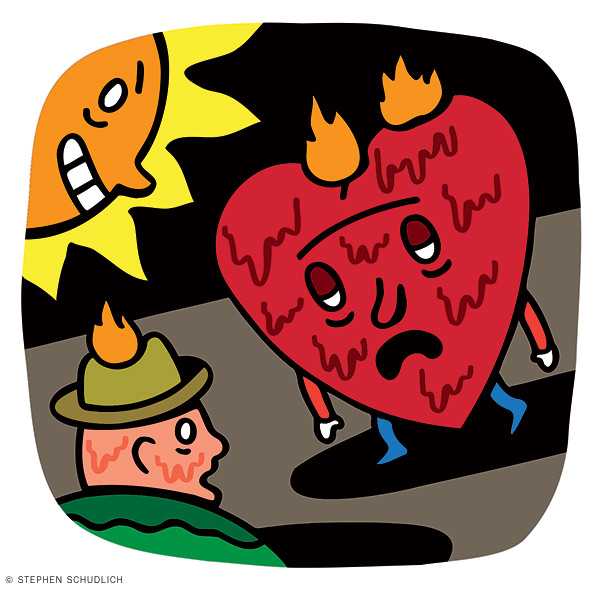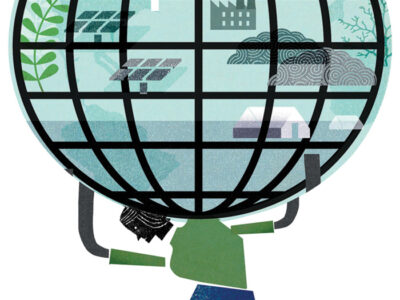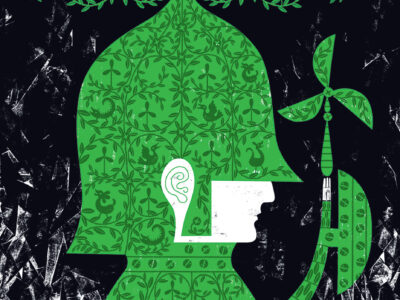
Heat Deaths Rising
As memories linger of last summer’s record-breaking temperatures in many parts of the US and the world, a pair of studies out of Penn’s Leonard Davis Institute of Health Economics reinforce the connections between extreme heat events and increased mortality—and highlight the need for action to mitigate their effects as climate change intensifies.
In the first paper, published in JAMA Network Open, researchers wanted to get at the overall impact of extreme heat events on deaths from all causes, a matter which has mostly been studied only with regard to urban areas. Using public data collected from all 3,108 counties in the contiguous US between 2008 and 2017, they determined that each day of extreme heat (a heat index of 90 degrees or more) caused an additional .07 deaths per 100,000 adults, with estimated annual totals ranging from 752 deaths in 2008 to 2,337 in 2011.
The second paper, published in June in the journal Circulation, focused on cardiovascular deaths and found that each day of extreme heat resulted in a .12 percent increase in mortality from cardiovascular diseases, or an estimated 5,958 deaths over the study period.
In both analyses, larger impacts were seen among men compared to women, Blacks compared to whites, and older adults compared to younger. The studies were led by Sameed Khatana GM’19 Gr’22, a cardiologist who is an assistant professor at the Perelman School of Medicine and a senior fellow at LDI, and were coauthored with LDI Executive Director Rachel M. Werner and Peter Groeneveld, the institute’s research director.
“Although there has been a growing realization that extreme heat can be detrimental to the health of individuals, many local governments still have no heat plans; and access to cooling centers, particularly for vulnerable individuals, is often lacking,” Khatana told an LDI publication. “Many areas, such as the Northeast, that in the past have not had much extreme heat are now experiencing these events with increasing frequency. Therefore, creating plans for how to get access to cooling for vulnerable individuals during extreme heat events is crucial.”

Oh Deer
Transmission of the SARS-CoV-2 virus from humans to deer populations appears to be a common phenomenon, based on a study measuring the incidence of the virus in white-tailed deer in Pennsylvania that was conducted last fall by a team of researchers in the lab of Penn microbiologist Frederic D. Bushman, creating a potential reservoir for future infections in humans.
SARS-CoV-2 was likely sparked by an animal-to-human transmission, and the same is true for the original SARS virus and MERS, as well as many other viruses that have caused human epidemics. Since the COVID-19 pandemic took off in late 2019, the virus has moved from humans to a variety of animal populations, including great apes, mice, cats, dogs, deer, mink, and hamsters. And some evidence exists of the virus having jumped back to humans from mink and deer.
From the beginning of October to the end of December 2021, researchers tested 123 white-tailed deer in Pennsylvania for COVID-19. Of these, 20 deer, located in 10 of 31 Pennsylvania counties, tested positive for the alpha and delta variants of the virus. This finding represented the “first examples of alpha and delta lineages in wild white-tailed deer.” Researchers also identified “five likely independent spillovers from humans to deer among seven fully sequenced genomes” from samples in the study.
Extrapolating from the infection rate of 16 percent found in the sample to the total deer population of the state, estimated to be more than 1 million, “suggests an enormous number of spillovers and infected deer in the state,” the authors write, though the mechanism of human to deer transmission “remains obscure.”
The study showed no evidence of “spillback” into humans, but continued efforts to “characterize human and deer SARS-CoV-2 lineages are valuable to maintain surveillance for such events,” they note. —JP




